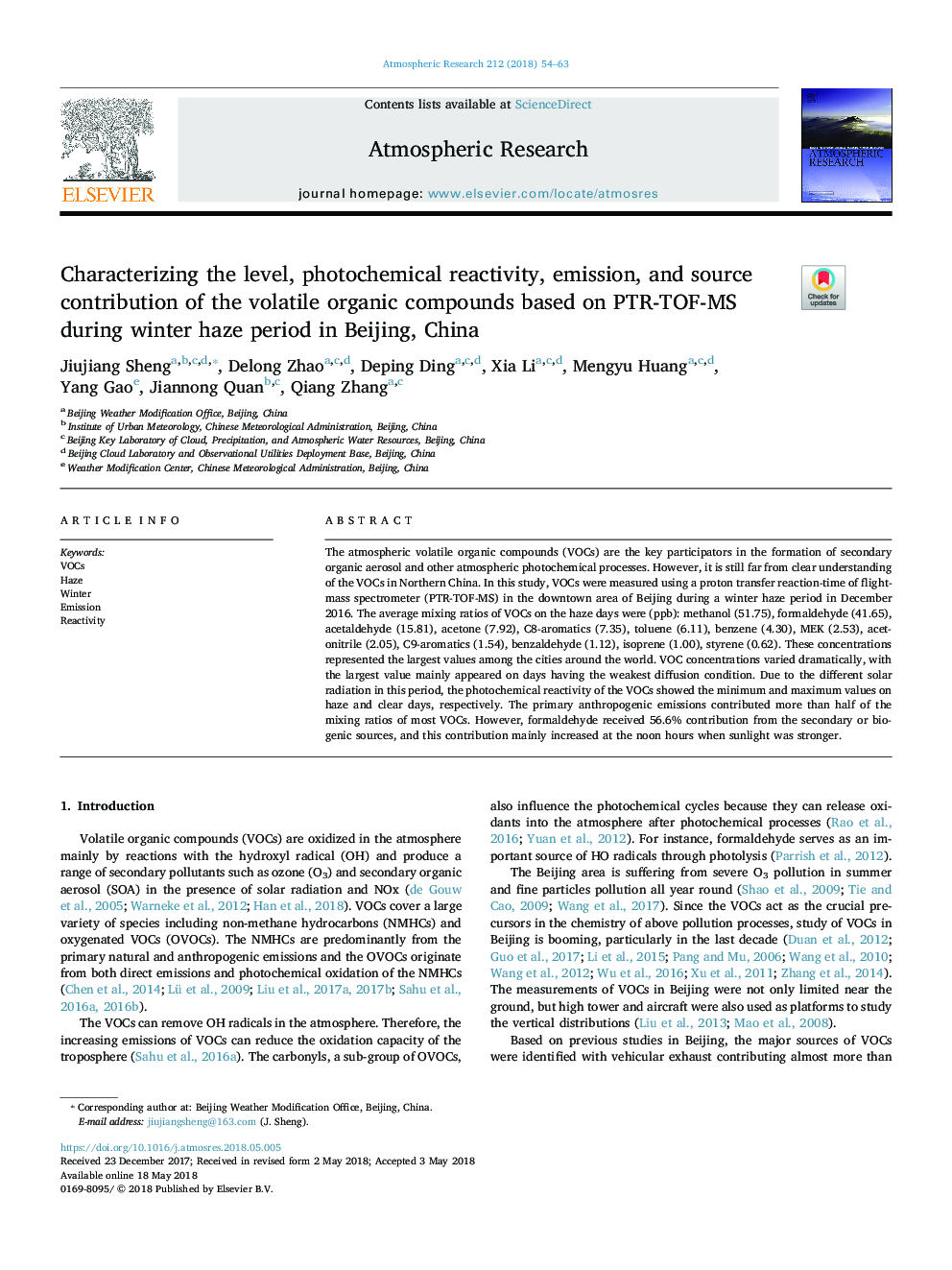| Article ID | Journal | Published Year | Pages | File Type |
|---|---|---|---|---|
| 8864499 | Atmospheric Research | 2018 | 10 Pages |
Abstract
The atmospheric volatile organic compounds (VOCs) are the key participators in the formation of secondary organic aerosol and other atmospheric photochemical processes. However, it is still far from clear understanding of the VOCs in Northern China. In this study, VOCs were measured using a proton transfer reaction-time of flight-mass spectrometer (PTR-TOF-MS) in the downtown area of Beijing during a winter haze period in December 2016. The average mixing ratios of VOCs on the haze days were (ppb): methanol (51.75), formaldehyde (41.65), acetaldehyde (15.81), acetone (7.92), C8-aromatics (7.35), toluene (6.11), benzene (4.30), MEK (2.53), acetonitrile (2.05), C9-aromatics (1.54), benzaldehyde (1.12), isoprene (1.00), styrene (0.62). These concentrations represented the largest values among the cities around the world. VOC concentrations varied dramatically, with the largest value mainly appeared on days having the weakest diffusion condition. Due to the different solar radiation in this period, the photochemical reactivity of the VOCs showed the minimum and maximum values on haze and clear days, respectively. The primary anthropogenic emissions contributed more than half of the mixing ratios of most VOCs. However, formaldehyde received 56.6% contribution from the secondary or biogenic sources, and this contribution mainly increased at the noon hours when sunlight was stronger.
Keywords
Related Topics
Physical Sciences and Engineering
Earth and Planetary Sciences
Atmospheric Science
Authors
Jiujiang Sheng, Delong Zhao, Deping Ding, Xia Li, Mengyu Huang, Yang Gao, Jiannong Quan, Qiang Zhang,
